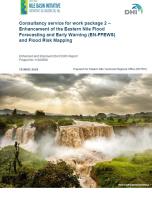Abstract
‘Biodiversity’ refers to the diversity of species of plants and animals and their habitats on Earth. The term ‘biodiversity’ only became a common phrase in the late 1980s (Wilson 1989), and includes all genes, species,
and ecosystems, and the ecological processes of which they are a part (Gaston 1996). Species are often taken as the unit upon which assessments of the status of biodiversity are made and have come to be used as the
common currency to express biodiversity.
The Convention on Biological Diversity (CBD) and the Ramsar Convention jointly compiled guidelines for the rapid ecological assessment of biodiversity of, among others, inland water ecosystems, highlighting the need for the promotion and guidance of such studies (CBD RAMSAR, 2006). The guidelines are designed as a suite of optional tools to assist in rapid inventories and assessment and monitoring of biological diversity. The guidelines focus largely on species (assessments of taxa) but also include some tools relevant for assessment of habitats.
Their overall conceptual framework for rapid assessment highlights an iterative process whereby the definition of purpose and the availability of existing information and data determines which tools and kinds of assessments are pursued. Intermediate steps include the review of existing knowledge (including traditional and local knowledge) and data, the identification of knowledge / data gaps, the study design and implementation and analysis and report production. Different purposes or objectives for information require different assessments. Options include baseline inventory assessments, species-specific assessments, change assessments, indicator assessments and resource assessments, each type with different output styles and formats. The basis of these guidelines underpins this study, but the outcomes were largely dependent of the quantity and quality of existing data.




